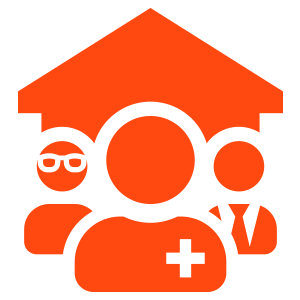Why Use Get Schooled On Concussions for Return to Learn post-concussion?
Because students who sustain a concussion find themselves out of school for a number of days, they miss instruction, they feel physically unwell when they return to the classroom and they are cognitively unavailable to learn.Your Content Goes Here
We Wrote Get Schooled On Concussions … For YOU! The Classroom Teacher
- Because when students with concussion return to school after rest, they still potentially feel physically unwell (still symptomatic)
Students and teachers must first work together to address symptoms so that students who feel unwell can be physically comfortable (and present) at school.
- Because when a student with concussion returns to school after rest, they still potentially feel cognitively unavailable to learn
Students and teachers must first work together to address symptoms so that students with cognitive inefficiency can be cognitively available to learn.
- Because teachers need to give themselves permission to provide students post-concussion, FIRST and FOREMOST, a safe and soft place to land in the general education classroom
- Because a student who has missed instruction, has been physically or cognitively unavailable to learn post-concussion, will likely need re-teaching of content, will likely not be able to make up all missed work and will need to focus on keeping up with current work versus make up work due to limited energy and reserve.
- This will require teachers to consider:
- some REMOVAL of non-essential work (“nice” to knows)
- some REDUCTION of semi-essential work and (“need” to knows)
- clear expectations around a reasonable amount of essential work (“must” knows)
Because schools have always been, and must always be, places of support and success for students post-concussion.
We Wrote Get Schooled On Concussion … For YOU!

School Administrator
- Because Return to Learn post-concussion must be School-Based and School-Directed and can easily fall under the protections of the existing educational framework known as Multi-Tier System of Support (MTSS) or Response to Intervention (RTI)
- Because all students must return to school and learn even if parents choose not to have the concussion treated by a healthcare provider;
- Return to Learn cannot be predicated on a family’s willingness or ability to engage in medical or psychological services
- Return to Learn is a school’s obligation!
- Because all students with a concussion must return to learn, even if they do not return to sports/play. Return to Learn is for ALL students, not just athletes
- Because schools have school-wide and individual student liability to provide a robust Return to Learn for all students post-concussion

School Nurse, Counselor, Mental Health
- Because students with concussion are first impacted by missing school – which impacts instruction – which often makes it hard for teachers to know where to start with Return to Learn supports once back at school
- Because research shows that the time a student with a concussion is out of school for rest must be balanced against the downstream consequences of heightened anxiety, depression, isolation, getting off-track developmentally and falling grades
- Because concussions have been shown to impact mood and behaviors
In order for students post-concussion to get immediate and flexible support at school, classroom teachers must be our First Responders for Return to Learn. Much like a public health model where early and widespread identification, education and support occurs at the Universal/Primary Level, yielding an 80 to 90% intervention and prevention rate, Return to Learn supports in the general education setting will help our students feel better symptomatically so they can grow academically. Concussion research shows that 70% of students with a concussion will resolve within 28 days – that puts the “window of opportunity” for support squarely in the general education classroom!
Look to your existing educational framework of Multi-Tier System of Support (MTSS) or Response to Intervention (RTI) as a natural way to support students with concussion. Dropping concussion into your MTSS and/or RTI process allows educational settings to become empowered and independent in managing RTL post-concussion – leading to:
- decreased reliance upon healthcare providers (that may or may not be involved per the family’s choice)
- quick and flexible adjustments in the classroom (Tier 1)
- a built-in safety net for longer or more involved academic support (via Tier 2 supports)
- data collection in school health records in case a student’s needs ever rise to the level of a Child Find (Tier 3) evaluation
- capacity building and long-term sustainability of Return to Learn policy and procedures in schools
- decreased liability around individual students as MTSS/RTI demonstrates and documents authentic attempts to support struggling learners
- decreased school-wide liability as administrators can document Return to Learn professional development across their entire staff
- Equity for RTL supports to all students, in all parts of your district, regardless of their socioeconomic status
Our Mission:
- Our mission is to help you develop a School-Based and School- Directed Return to Learn protocol for your school/district that aligns with the existing education framework already in place at your school known as “Multi-Tiered System of Support MTSS” or “Response to Intervention RTI”
- Our mission is to empower teachers to take control over how Return to Learn (RTL) – following a concussion is handled (first and primarily) in their general education classrooms. School is the educator’s domain; no one knows the classroom better than teachers!
- #RTLB4RTP – Return to Learn applies to all students regardless of how they receive their concussion. All students return to learn even if they do not return to play.
